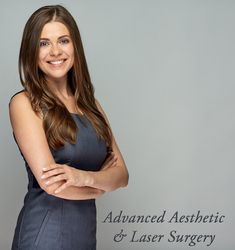Brachioplasty FAQ's Columbus OH
-
1. What is a brachioplasty?
 A brachioplasty (arm lift) is an outpatient surgical procedure where excess skin is removed from the inner aspect of the upper arms.
A brachioplasty (arm lift) is an outpatient surgical procedure where excess skin is removed from the inner aspect of the upper arms. -
2. Who is a candidate for a brachioplasty?
Ideal candidates for arm lift surgery are healthy patients who have a considerable amount of excess skin on their upper arms, typically as a result of significant weight loss.
-
3. How much skin is removed during an arm lift surgery?
The amount of skin removed is determined by how much excess skin exists. Generally a large ellipse of skin is taken out from the armpit to the elbow. Pinching together the loose skin and marking the excess determines the width of the ellipse. Removing too much skin can put too much tension on the incision and may result in separating of the skin edges. In many cases, such as many of the massive weight loss patients, there is so much loose skin that the excision extends past the elbow to the forearm and through the axilla down the side of the chest. This is known as an “L” brachioplasty.
-
4. Where are the scars from a brachioplasy?
The surgery is designed to hide the scars as much as possible. When the arms are down by a patient’s side, they are not visible. They can be seen, however, when wearing short sleeve shirts with the arms elevated. As most patients getting an arm lift have lost a lot of weight and have a lot of excess skin to take out, the standard scar runs on the inside of the upper arm, just past the elbow onto the forearm for a few inches and onto the side of the chest after passing through the anterior of the axilla.
-
5. Is liposuction performed at the same time as a brachioplasty?
While many patients have already lost the majority of the excess fat before they come in for a consultation, some still have excess fat that can be removed at the beginning of the procedure through liposuction.
-
6. Is there much pain with a brachiplasty?
At the beginning of an arm lift, small incisions are created in order to infiltrate a significant volume of dilute local anesthetic and epinephrine. The local anesthetic substantially reduces pain after surgery, while the epinephrine dramatically reduced blood loss and bruising. Although pain pills are prescribed, most patients are off of them in just a few days.
-
7. Are drains used with an arm lift?
One drain is typically used on each side and is usually removed in 3-4 days. In larger cases, sometimes two drains are placed. Drains remove excess blood and fluid from under the skin flaps to reduce swelling and speed up the recovery. They also help to prevent seroma formation.
-
8. What kinds of dressings are used after a brachioplasty?
As all sutures are buried to avoid stitch marks, the incisions are covered with sterile tapes, an antibiotic impregnated gauze (Xeroform), sterile bulky gauze wraps and Ace bandages. Once the drains are removed, compression garments are worn for several weeks.
-
9. What other procedures can be performed at the same time as a brachioplasty?
Patients who have lost a considerable amount of weight typically have a laundry list of cosmetic procedures that they are considering and it is not uncommon to combine some of them to reduce costs and time of work. An arm lift can be done in the same setting as a tummy tuck, liposuction, breast augmentation or thigh lift.
-
10. What is done with a mini-brachioplasty?
The biggest downside of a brachioplasty is the scars. A mini-Arm lift only leaves a scar in the armpit, however; only a small amount of skin can be removed resulting in a relatively minor improvement in the uppermost portion of the upper arm. Few patients are candidates for a mini-brachioplasty.
-
11. What are some of the standard risks for an arm lift?
Most of the risks of a brachioplasty are similar to those of almost any other cosmetic procedure including bleeding, infection, scars, numbness, pain anesthesia, seroma, open wounds and nerve injury. Substantial efforts are taken to avoid each of these.
-
12. Will the arm skin stay tight after surgery?
Even though the skin is pulled tight during the procedure, it will gradually loosen over time during the healing process. Some of this is due to the loss of skin elasticity during the weight gain and weight loss period that most brachioplasty patients have gone through.
-
13. What can I do to reduce scarring after a brachioplasty?
To reduce scarring, we use buried absorbable sutures. The incisions are covered with sterile tapes, which are glued in place and can stay on for days to weeks. We recommend that you replace these with more tape for about three months. If you react to the tapes or the adhesive, we recommend silicone sheeting.
-
14. How do I know if I need an arm lift or if liposuction alone would be sufficient?
The answer depends on the amount of fat that is present and the quality of skin. Those who have lost a considerable amount of weight typically have stretch marks and poor skin tone, which responds poorly to liposuction alone. These patients generally need skin removed in the form of an arm lift. Patients who have good skin tone, no stretch marks and just excess upper arm far are better candidates for liposuction alone.